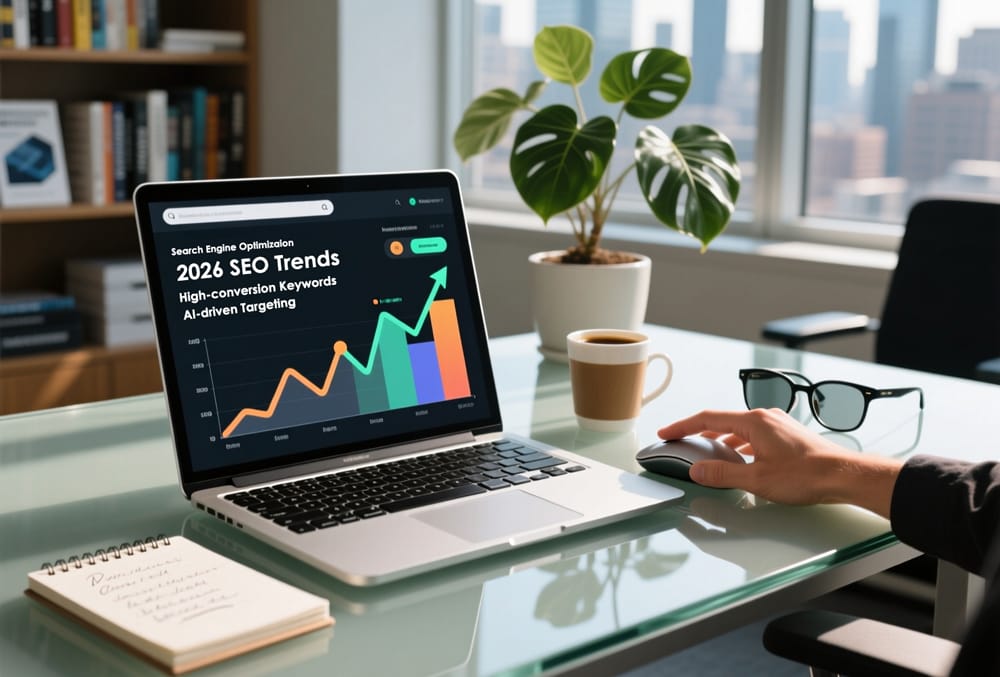The Ultimate SEO Jargon Glossary: A Beginner’s Guide to Ranking Success
Welcome to the overwhelming, yet fascinating, world of Search Engine Optimization. If you’ve ever started researching how to get your website to rank and felt like you’d stumbled into a secret society speaking a foreign language, you’re not alone. Words like “SERP,” “canonical,” “schema,” and “domain authority” are thrown around casually, leaving many aspiring business owners and marketers feeling lost before they’ve even begun.
But here’s a secret: this jargon isn’t meant to confuse you. It’s simply the specialized vocabulary used to describe the intricate process of helping websites get found by the people who need them most. Think of this article as your personal translator and roadmap. By the time you finish, you’ll not only understand what these terms mean but also how they fit together to form a cohesive, powerful strategy.
For businesses in Pakistan and beyond, understanding these foundational concepts is the first step toward digital success. And when you’re ready to move from understanding to action, our team at HITS Web SEO Write is here to help. We provide expert Web Design, SEO, and Content Writing services to turn this jargon into tangible results for your business.
Let’s dive in and demystify the language of SEO, one term at a time. 🚀
Part 1: The Core Foundation – Essential Jargon You Must Know
These are the fundamental building blocks of SEO. Without a solid grasp of these, the rest of the terms won’t make sense.
SEO (Search Engine Optimization): The process of optimizing your website to improve its visibility in search engine results. It’s about making your site as attractive as possible to search engines like Google, Bing, and Yahoo.
Analogy: SEO is like setting up a shop in the perfect location with a clear, beautiful sign so that customers can find you easily.
Example: Making sure your website’s main pages are optimized for keywords like “web design Pakistan” or “content writing services.”
SERP (Search Engine Results Page): The page displayed by a search engine in response to a user’s query. This is where your website wants to be.
Analogy: The SERP is the high street where all the shops are located. Your goal is to be on the first block.
Example: The list of results you see after searching for “best SEO company Pakistan.”
Keyword: A word or phrase that a user types into a search engine to find information. Keywords are the bridge between your content and your audience.
Analogy: Keywords are the specific questions your customers are asking.
Example: A user searching for “affordable web design in Lahore” is using a keyword phrase.
Ranking: Your website’s position in the search results for a specific keyword. Ranking on the first page, especially in the top 3 positions, is the ultimate goal.
Analogy: Ranking is your position in a race.
Example: If your website is the third result for “web design services,” it has a ranking of 3.
Organic Search: The traffic that comes to your website from unpaid search results. This is the primary goal of SEO.
Analogy: Organic search is like a customer finding your shop because of a positive word-of-mouth referral, not because of a paid advertisement.
Example: A visitor clicks on your article from Google’s standard search results, not from a sponsored ad.
PPC (Pay-Per-Click): A form of paid advertising where you pay a fee each time your ad is clicked. While part of digital marketing, it is distinct from organic SEO.
Analogy: PPC is like paying for a billboard on a busy highway to attract attention.
Example: The sponsored ads you see at the very top of a SERP have a little “Ad” label next to them.
Algorithm: A set of rules and calculations used by search engines to rank websites. Google’s algorithm is constantly evolving, with major updates happening regularly.
Analogy: The algorithm is the secret recipe that determines how well your website’s ingredients (content, links, code) work together to create a delicious ranking result.
Example: The “Helpful Content Update” or “Core Update” are names for changes to Google’s algorithm.
Part 2: The On-Page Arsenal – Jargon for Content & User Experience
On-page SEO refers to all the optimizations you perform directly on your website to improve its ranking. This is where your content and design truly shine. HITS Web SEO Writes Content Writing and Web Design services are built on these principles.
Keyword Research: The process of finding and analyzing search terms that people use to find products, services, or information. This is the foundation of any successful SEO campaign.
Why it matters: It tells you exactly what your potential customers are looking for. Our team at HITS Web SEO Write specializes in deep keyword research to ensure your content directly answers user queries.
Long-Tail Keyword: A longer, more specific keyword phrase, typically with lower search volume but higher conversion potential.
Analogy: Instead of searching for “shoes,” a user searches for “best running shoes for men with wide feet.”
Example: A website for a bakery might target the long-tail keyword “gluten-free chocolate cake recipe for beginners.”
LSI (Latent Semantic Indexing) Keywords: Keywords that are semantically related to your main keyword. They help search engines understand the context and depth of your content.
Analogy: If your main keyword is “digital marketing,” LSI keywords would include “SEO,” “social media,” “PPC,” “content strategy,” etc.
Pillar Page: A comprehensive piece of content that covers a broad topic in depth, linking out to more specific “cluster” content.
Analogy: The pillar page is the main table of contents for a book, while the cluster pages are the individual chapters.
Example: An article titled “The Ultimate Guide to Digital Marketing” would be a pillar page, linking to cluster pages like “SEO for Beginners” and “Social Media Marketing Strategies.”
Meta Title: The title of a webpage that is displayed in the SERP. It is a crucial element for attracting clicks.
Analogy: The meta title is your headline in the newspaper.
Example:
The Ultimate SEO Jargon Glossary: 100+ Terms Explained
Meta Description: A summary of a webpage’s content, displayed in the SERP below the meta title. It’s your chance to tell users why they should click on your link.
Analogy: The meta description is the short description of a movie on a streaming service.
Example:
Feeling lost in the world of SEO jargon? Our ultimate glossary demystifies 100+ key terms...
H1-H6 Tags: HTML tags used to structure content on a page. The H1 is the main heading, followed by subheadings (H2, H3, etc.).
Why it matters: It provides a clear hierarchy for both users and search engines, making content easier to read and crawl. HITS Web SEO Write’s content team carefully structures articles with a logical hierarchy for maximum readability.
Schema Markup: A form of microdata that you can add to your website’s HTML to help search engines better understand your content. It can lead to rich snippets.
Analogy: Schema is like adding special labels to the ingredients of a recipe, telling Google “this is the cooking time,” “this is the number of servings,” etc.
Example: Schema can make your search result show a star rating or a list of FAQs directly on the SERP.
Part 3: The Technical Blueprint – Jargon for Website Health
Technical SEO ensures your website is a high-performance vehicle for your content. It’s all about the mechanics that happen behind the scenes. Our Web Design service at HITS Web SEO Write ensures your website is built on this solid technical foundation from day one.
Crawling: The process by which search engine bots (also known as spiders or crawlers) discover and read your website’s content.
Analogy: Crawling is like a library librarian scanning all the books to see what’s available.
Why it matters: If your site can’t be crawled, it can’t be indexed or ranked.
Indexing: The process of a search engine adding your webpage to its database. Once a page is indexed, it can appear in the search results.
Analogy: Indexing is like the librarian adding your book to the library’s official catalog.
Core Web Vitals: A set of specific factors that Google considers important in a webpage’s overall user experience.
The Three Vitals:
LCP (Largest Contentful Paint): How quickly the largest visible element on a page loads.
FID (First Input Delay): How quickly a page responds to a user’s first interaction.
CLS (Cumulative Layout Shift): How stable the page is visually as it loads.
Why it matters: A slow or “jumpy” website frustrates users and can hurt your rankings. Our HITS Web SEO Write Web Design team focuses on creating fast, responsive, and stable websites.
Sitemap: An XML file that lists all the important pages on your website, helping search engine crawlers find and index them more efficiently.
Analogy: The sitemap is like the blueprint of a building, showing all the rooms and hallways.
Robots.txt: A text file that tells search engine crawlers which parts of your site they should and shouldn’t crawl.
Analogy: The robots.txt file is like a “do not enter” sign at the entrance of certain parts of a building.
HTTPS: Hypertext Transfer Protocol Secure. A secure version of the HTTP protocol is used for communication between your browser and the website. Google favors secure websites.
Analogy: HTTPS is like a locked door for your data, protecting it from intruders.
Mobile-First Indexing: A search engine’s practice of prioritizing the mobile version of a website for crawling and indexing.
Why it matters: The majority of web traffic now comes from mobile devices. If your site isn’t mobile-friendly, you will be penalized in rankings. HITS Web SEO Write always builds responsive websites that are optimized for mobile.
Canonical Tag: An HTML tag used to tell search engines that a specific URL is the “master” version of a page, preventing duplicate content issues.
Example: You have a product page that can be accessed via
https://example.com/producthttps://example.com/product?utm_source=email. The canonical tag tells Google to treathttps://example.com/productas the one to index.
Part 4: The Off-Page Signals – Jargon for Authority & Trust
Off-page SEO refers to actions taken outside of your website to impact your rankings. The most important factor is backlinks. This is where the “SEO” part of HITS Web SEO Write truly comes into play.
Backlink: A link from one website to another. Think of it as a digital vote of confidence.
Analogy: A backlink is like a reputable expert citing your work in their own book or article.
Domain Authority (DA): A search engine ranking score, developed by Moz, that predicts how likely a website is to rank in the SERP. The score ranges from 1 to 100.
Why it matters: A high DA indicates a website with a strong link profile and a lot of trust.
Page Authority (PA): A score that predicts how well a specific page will rank.
Analogy: DA is the reputation of the entire university, while PA is the reputation of a specific department within that university.
Anchor Text: The visible, clickable text in a hyperlink.
Example: In the sentence, “Learn more about our Web Design services,” the bold text is the anchor text.
NoFollow & DoFollow:
DoFollow: The default state of a link, which passes “link equity” or “authority” to the linked page.
NoFollow: An HTML attribute that tells search engines not to pass link equity. It’s often used for sponsored content or links in comments.
Link Building: The process of actively acquiring backlinks from other websites to your own.
Why it matters: A strong link profile is one of the most important factors for ranking. Our SEO experts at HITS Web SEO Write use ethical, long-term strategies to build quality backlinks that boost your authority.
Link Equity: The value or authority that a backlink passes from one page to another.
Analogy: Link equity is like a positive recommendation from a trusted friend, which carries more weight than one from a stranger.
Part 5: The Analytics & Reporting Metrics – Measuring Success
Once you’ve implemented your SEO strategy, you need to track its performance. This jargon helps you understand your results.
Organic Traffic: The number of visitors who come to your website from organic search results.
Why it matters: It’s the ultimate measure of your SEO campaign’s success.
Impressions: The number of times a link to your website was shown to a user in the search results.
Analogy: Impressions are like the number of times your business card was shown to potential customers.
Clicks: The number of times users clicked on your link in the SERP.
CTR (Click-Through Rate): The percentage of users who clicked on your link out of the total number of impressions.
Formula: (Clicks/Impressions)∗100
Why it matters: A high CTR can signal to Google that your meta title and description are highly relevant and compelling.
Bounce Rate: The percentage of visitors who land on your page and leave without visiting any other pages on your site.
Why it matters: A high bounce rate could indicate that your content isn’t relevant to the user’s search query, the page loads too slowly, or the user experience is poor.
Conversion Rate: The percentage of visitors who complete a desired action (e.g., make a purchase, fill out a form, subscribe to a newsletter).
Why it matters: This metric directly ties your SEO efforts to your business goals.
Google Analytics (GA4): A free web analytics service that tracks and reports website traffic. It’s an indispensable tool for understanding user behavior.
Google Search Console (GSC): A free service that helps you monitor, maintain, and troubleshoot your site’s presence in Google Search results.
Why it matters: It provides critical data on clicks, impressions, keywords, crawl errors, and more.
Part 6: The Modern SEO Landscape – Evolving Jargon
SEO is not static. The rise of new technologies and shifts in user behavior mean new terms are constantly entering the vocabulary. Here’s what’s trending in 2025.
EEAT (Experience, Expertise, Authority, Trust): An evolution of the original E-A-T framework. It’s Google’s way of evaluating the quality of content, especially in sensitive areas like health and finance.
Why it matters: Google wants to rank content from credible sources that can demonstrate real-world experience.
Semantic Search: A search engine’s ability to understand the meaning and context behind a search query, rather than just matching keywords.
Analogy: The old way was searching for “apple” and getting results for the fruit and the company. Semantic search understands if you mean “apple computer” or “apple orchard.”
Generative AI: Artificial intelligence that can generate new content, such as text, images, or code. Tools like ChatGPT and Gemini are changing how content is created and how search engines evaluate it.
Why it matters: While AI can be a powerful tool for content creation, search engines are getting smarter about detecting low-quality or “unhelpful” AI-generated content. The key is to use AI to augment human expertise, not replace it. Our content writers at HITS Web SEO Write use AI tools to research and draft content, but always add a layer of human-driven expertise and originality.
Voice Search Optimization: The process of optimizing your content to rank for voice-activated search queries. These queries are typically longer and more conversational.
Example: A user might ask, “Hey Google, what’s the best web design company in Lahore?”
Core Updates: Major, broad changes to Google’s ranking algorithms that affect search results across the board. They are often announced publicly.
Analogy: A core update is like a full-system software update for Google.
Part 7: A Practical Guide to Using This Jargon for Success
Understanding these terms is one thing; putting them into practice is another. Here’s a simple workflow that ties everything together.
Step 1: The Research Phase (Your SEO Blueprint) 🗺️
Keyword Research: Start here. Use tools to identify high-intent, low-competition long-tail keywords relevant to your business. Find LSI keywords to enrich your content.
Competitor Analysis: Analyze the top-ranking SERPs for your main keywords to see what kind of content and meta titles are performing best.
Step 2: The On-Page Implementation (Creating Your Content) ✍️
Content Strategy: Based on your research, create a plan for your pillar pages and supporting content.
Writing & Optimization: Write comprehensive, high-quality articles. Naturally weave in your main keywords and LSI keywords. Use a logical H1-H6 tag hierarchy. Write compelling meta titles and meta descriptions.
Technical Content: Add Schema Markup where appropriate to earn rich snippets.
Step 3: The Technical Audit (Ensuring Your Site is Healthy) 🛠️
Site Crawl: Ensure your website has a working sitemap and robots.txt file to help search engines crawl and index your pages.
Performance Check: Use tools to check your Core Web Vitals and ensure your site is fast, responsive, and has no layout shifts.
Mobile-First Design: Double-check that your site is fully functional and optimized for mobile devices.
Step 4: The Off-Page Strategy (Building Authority) 🤝
Link Building: Actively seek out opportunities to earn DoFollow backlinks from reputable websites. This could be through guest posting, partnerships, or PR.
Link Profile Monitoring: Regularly check your Domain Authority and Page Authority to track your progress and ensure you don’t have any harmful links.
Step 5: The Reporting & Analysis (Measuring Results) 📊
Monitor Analytics: Use Google Search Console and Google Analytics to track your organic traffic, impressions, clicks, and CTR.
Performance Review: Set up a monthly or quarterly check-in to see how your articles are ranking. Identify which ones are succeeding and which need to be optimized further.
The Power of Partnership: Why Work with a Professional?
Navigating this complex web of jargon and best practices can be a full-time job. This is where a dedicated partner can make all the difference. At HITS Web SEO Write, based in Pakistan, we are more than just a service provider; we are your strategic ally.
Our comprehensive services handle every step of this process for you:
Web Design: We build aesthetically pleasing and technically sound websites that pass Core Web Vitals checks with flying colors.
SEO: We craft and execute a complete SEO strategy, from deep keyword research and on-page optimization to expert link building that boosts your authority.
Content Writing: Our professional writers create original, engaging, and highly optimized content that is designed to rank for your most important keywords.
The Jargon Is Your Key to Success
You’ve just completed a crash course in the language of Search Engine Optimization. The jargon that once seemed intimidating is now a powerful toolkit for understanding and improving your website’s online visibility.
Remember, SEO is a marathon, not a sprint. It requires continuous effort and a deep understanding of what search engines are looking for. But with this glossary and the right partner, you’re not just playing the game—you’re playing to win.
If you’re ready to stop guessing and start ranking, let HITS Web SEO Write in Pakistan be your guide. We will transform your online presence and turn clicks into customers. Contact us today to learn more about our services. 🏆
Table of Key SEO Metrics
| Metric | What it Measures | Why it Matters |
| Organic Traffic | The number of visitors from unpaid search results. | The primary indicator of a successful SEO campaign. |
| Impressions | How many times has your site appeared in search results? | Shows your visibility and potential audience reach. |
| CTR | The percentage of users who clicked on your link. | Reflects the effectiveness of your meta title and description. |
| Bounce Rate | The percentage of single-page visits. | Can signal issues with content relevance or user experience. |
| Core Web Vitals | Site speed and stability. | A direct ranking factor that impacts user experience. |
| Domain Authority | A website’s overall ranking strength. | A predictive metric for your site’s ranking potential. |
| Conversion Rate | The percentage of visitors who complete a goal. | Connects your SEO efforts directly to business results. |
List of Common SEO Tools
For Keyword Research: SEMrush, Ahrefs, Moz Keyword Explorer
For Technical Audits: Google Search Console, Screaming Frog
For Analytics: Google Analytics, Google Search Console
For Link Analysis: Moz Link Explorer, Ahrefs Backlink Checker
For Rank Tracking: SERPWatcher, AccuRanker




